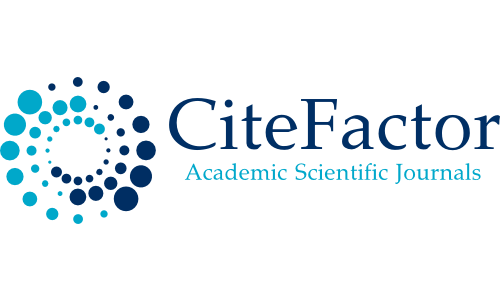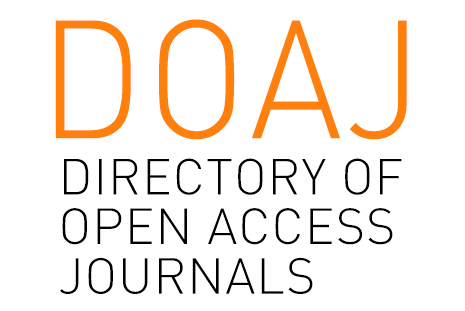Benefícios da leucoredução de hemocomponentes e suas principais indicações: revisão integrativa
Benefits of leukoreduction of blood components and its main instructions: integrative review
DOI:
https://doi.org/10.17765/2176-9206.2025v18e13074Palavras-chave:
Redução de leucócitos, Transfusão de sangue, FiltraçãoResumo
As transfusões de sangue são utilizadas para tratar condições médicas potencialmente fatais e problemas de saúde em um curto espaço de tempo. No entanto, as transfusões podem produzir eventos adversos, alguns dos quais podem estar relacionados a respostas do sistema imunológico ou à transmissão de agentes infecciosos (por exemplo, HCV, HTLV-I/II, HBV e vírus da imunodeficiência humana). A leucorredução é um processo em que os leucócitos são intencionalmente removidos do sangue doado para minimizar o risco de reações adversas em indivíduos que recebem uma transfusão de sangue. Esta é uma revisão integrativa da literatura realizada nas bases de dados eletrônicas BVS, Scielo e Pubmed, de 2003 a 2024. Utilizando critérios de inclusão, exclusão e elegibilidade, dezesseis artigos foram selecionados para discussão. A revisão mostrou que, embora os benefícios da remoção de leucócitos para reduzir complicações infecciosas e não infecciosas em todos os tipos de pacientes transfundidos sejam evidentes, a adoção da remoção universal de leucócitos ainda não é totalmente implementada na prática médica de transfusão, especialmente devido ao alto custo dos filtros.
Downloads
Referências
1. Simancas-Racines D, Arevalo-Rodriguez I, Urrutia G, Buitrago-Garcia D, Núñez-González S, Martínez-Zapata MJ, et al. Leukodepleted Packed Red Blood Cells Transfusion in Patients Undergoing Major Cardiovascular Surgical Procedure: Systematic Review and Meta-Analysis. Cardiol Res Prac. 2019;2019: 7543917. https://doi.org/10.1155/2019/7543917
2. Busch MP, Bloch EM, Kleinman S. Prevention of transfusion-transmitted infections. Blood. 2019;133(17): 1854–1864. https://doi.org/10.1182/blood-2018-11-833996
3. Candotti D, Boizeau L, Laperche S. Occult hepatitis B infection and transfusion-transmission risk. Transfus Clin Biol. 2017;24(3): 189–195. https://doi.org/10.1016/j.tracli.2017.06.014
4. Janatpour KA, Kalmin ND, Jensen HM, Holland PV. Clinical outcomes of ABO-incompatible RBC transfusions. Am. J. Clin. Pathol. 2008;129(2): 276–281. https://doi.org/10.1309/VXY1ULAFUY6E6JT3
5. Lavoie J. Blood transfusion risks and alternative strategies in pediatric patients. Paediatric Anaesthesia. 2011;21(1): 14–24. https://doi.org/10.1111/j.1460-9592.2010.03470.x
6. Blumberg N, Heal JM. How do we forecast tomorrow’s transfusion? — Next generation transfusion practices to improve recipient safety. Transfus Clin Biol. 2023;30(1): 31–34. https://doi.org/10.1016/j.tracli.2022.09.005
7. Yazer MH, Podlosky L, Clarke G, Nahirniak SM. The effect of prestorage WBC reduction on the rates of febrile nonhemolytic transfusion reactions to platelet concentrates and RBC. Transfusion. 2004;44(1): 10–15. https://doi.org/10.1046/j.0041-1132.2003.00518.x
8. Paglino JC, Pomper GJ, Fisch GS, Champion MH, Snyder EL. Reduction of febrile but not allergic reactions to RBCs and platelets after conversion to universal prestorage leukoreduction. Transfusion. 2004;44(1): 16–24. https://doi.org/10.1046/j.0041-1132.2004.00608.x
9. Chand S, Rudrappan RB, Gupta D. Leukoreduced red cell concentrates: Are they meeting the quality standards? Asian J Transfus Sci. 2023;17(2): 151–156. https://doi.org/10.4103/ajts.ajts_126_21
10. Bassuni WY, Blajchman MA, Al-Moshary MA. Why implement universal leukoreduction? Hematol oncol stem cel ther. 2008;1(2): 106–123. https://doi.org/10.1016/S1658-3876(08)50042-2
11. Pertinhez TA, Casali E, Baroni F, Berni P, Baricchi R, Spisni A. A Comparative Study of the Effect of Leukoreduction and Pre-storage Leukodepletion on Red Blood Cells during Storage. Front. Mol. Biosci. 2016;3: 13. https://doi.org/10.3389/fmolb.2016.00013
12. Choi S, Choi SJ, Shin JW, Yoon YA. Common Data Model-based Analysis of Selective Leukoreduction Protocol Compliance at Three Hospitals. Annals of Laboratory Medicine. 2022;43(2): 187. https://doi.org/10.3343/alm.2023.43.2.187
13. Cancino-Faure B, Fisa R, Riera C, Girona-Llobera E, Jimenez-Marco T. Where do Trypanosoma cruzi go? The distribution of parasites in blood components from fractionated infected whole blood. Transfusion. 2016;56(9): 2233–2238. https://doi.org/10.1111/trf.13687
14. Urias EVR, Teles L de F, Lula JF, Rocha CU, Pereira IA, Givisiez FN, et al. Leukocyte filters: a review of the mechanisms and applications in hemotherapy. Rev. Assoc. Med. Bras. 2021;67: 1056–1060. https://doi.org/10.1590/1806-9282.20210383
15. Pandey P, Pande A, Marik A, Sinha VK, Devra AK, Bhatt AP, et al. A retrospective observational study to estimate the risk of HLA alloimmunization with blood transfusion: Can the risk be reduced by leucodepletion? Immunobiology. 2023;228(5): 152727. https://doi.org/10.1016/j.imbio.2023.152727
16. Wiersum-Osselton JC, Slomp J, Frederik Falkenburg JH, Geltink T, van Duijnhoven HLP, Netelenbos T, et al. Guideline development for prevention of transfusion-associated graft-versus-host disease: reduction of indications for irradiated blood components after prestorage leukodepletion of blood components. British Journal of Haematology. 2021;195(5): 681–688. https://doi.org/10.1111/bjh.17822
17. Satake M, Suto Y. Universal or selective irradiation: a comparison of approaches. Transfus Apher Sci. 2022;61(2): 103403. https://doi.org/10.1016/j.transci.2022.103403
18. Khan AI, Patidar GK, Lakshmy R, Makhija N, Talwar S, Hazarika A. Effect of leukoreduction on transfusion-related immunomodulation in patients undergoing cardiac surgery. Transfusion Medicine (Oxford, England). 2020;30(6): 497–504. https://doi.org/10.1111/tme.12714
19. Rodriguez JV, Tormey CA. Can transfusion-associated graft-versus-host disease (TA-GvHD) be prevented with leukoreduction alone? Transfusion and Apheresis Science. 2022;61(2): 103402. https://doi.org/10.1016/j.transci.2022.103402
20. ANVISA. Resolução - RDC n° 34, de 11 de junho de 2014. Dispõe sobre as boas práticas no ciclo do sangue. 2014. Available from:
https://saude.rs.gov.br/upload/arquivos/carga20170553/04145350-rdc-anvisa-34-2014.pdf
21. Brasil. Portaria n° 158 de 04 de Fevereiro de 2016. Redefine o regulamento técnico de procedimentos hemoterápicos. 2016. Available from:
https://bvsms.saude.gov.br/bvs/saudelegis/gm/2016/prt0158_04_02_2016.html
22. Garraud O, Chiaroni J. An overview of red blood cell and platelet alloimmunisation in transfusion. Transfus Clin Biol. 2022;29(4): 297–306. https://doi.org/10.1016/j.tracli.2022.08.140
23. Thomas KA, Shea SM, Yazer MH, Spinella PC. Effect of leukoreduction and pathogen reduction on the hemostatic function of whole blood. Transfusion. 2019;59(S2): 1539–1548. https://doi.org/10.1111/trf.15175
24. Gregori L, McCombie N, Palmer D, Birch P, Sowemimo-Coker SO, Giulivi A, et al. Effectiveness of leucoreduction for removal of infectivity of transmissible spongiform encephalopathies from blood. The Lancet. 2004;364(9433): 529–531. https://doi.org/10.1016/S0140-6736(04)16812-8
25. Hirani R, Mondy P. Identifying the possible causes of recurrent leukodepletion filter blockage in whole blood donations. Transfus Apher Sci. 2021;60(4): 103146. https://doi.org/10.1016/j.transci.2021.103146
26. Shapiro MJ. To filter blood or universal leukoreduction: what is the answer? Critical Care. 2004;8(2): S27. https://doi.org/10.1186/cc2453
27. Sharma RR, Marwaha N. Leukoreduced blood components: Advantages and strategies for its implementation in developing countries. Asian J Transfus Sci. 2010;4(1): 3. https://doi.org/10.4103/0973-6247.59384
28. Mittal S, Chacko MP, Varughese S, Raj A, Gowri M, Thankachen R, et al. Laboratory and clinical comparison of the efficacy of prestorage leukoreduction of red cells at cold versus room temperature. Transfusion. 2021; trf.16570. https://doi.org/10.1111/trf.16570
29. Rajesh K, Harsh S, Amarjit K. Effects of Prestorage Leukoreduction on the Rate of Febrile Nonhemolytic Transfusion Reactions to Red Blood Cells in a Tertiary Care Hospital. Ann Med Health Sci Res. 2015;5(3): 185–188. https://doi.org/10.4103/2141-9248.157498
30. Carson JL, Guyatt G, Heddle NM, Grossman BJ, Cohn CS, Fung MK, et al. Clinical Practice Guidelines From the AABB: Red Blood Cell Transfusion Thresholds and Storage. JAMA. 2016;316(19): 2025–2035. https://doi.org/10.1001/jama.2016.9185
31. Wang RR, Triulzi DJ, Qu L. Effects of prestorage vs poststorage leukoreduction on the rate of febrile nonhemolytic transfusion reactions to platelets. Am J Clin Pathol. 2012;138(2): 255–259. https://doi.org/10.1309/AJCP5H7EKZTGGBKZ
32.BRASIL. Guia para uso de hemocomponentes. Ministério da Saúde; 2015. Available from: https://bvsms.saude.gov.br/bvs/publicacoes/guia_uso_hemocomponentes_2ed.pdf
33. Bianchi M, Orlando N, Valentini CG, Papacci P, Vento G, Teofili L. Infectious complications in neonatal transfusion: Narrative review and personal contribution. Transfus Apher Sci. 2020;59(5): 102951. https://doi.org/10.1016/j.transci.2020.102951
34. Jacquot C, Delaney M. Efforts Toward Elimination of Infectious Agents in Blood Products. J Intensive Care Med. 2018;33(10): 543–550. https://doi.org/10.1177/0885066618756589
35. Mainou M, Alahdab F, Tobian AAR, Asi N, Mohammed K, Murad MH, et al. Reducing the risk of transfusion-transmitted cytomegalovirus infection: a systematic review and meta-analysis. Transfusion. 2016;56(6 Pt 2): 1569–1580. https://doi.org/10.1111/trf.13478
36. Voruz S, Gowland P, Eyer C, Widmer N, Abonnenc M, Prudent M, et al. Transfusion-transmitted cytomegalovirus: behaviour of cell-free virus during blood component processing. A study on the safety of labile blood components in Switzerland. Blood Transfus. 2020;18(6): 446–453. https://doi.org/10.2450/2020.0241-19
37. Heddle NM, Boeckh M, Grossman B, Jacobson J, Kleinman S, Tobian AAR, et al. AABB Committee Report: reducing transfusion-transmitted cytomegalovirus infections. Transfusion. 2016;56(6 Pt 2): 1581–1587. https://doi.org/10.1111/trf.13503
38. Souza MTD, Silva MDD, Carvalho RD. Integrative review: what is it? How to do it? Einstein. 2010;8(1): 102–106. https://doi.org/10.1590/s1679-45082010rw1134
39. Whittemore R, Knafl K. The integrative review: updated methodology. Journal of Advanced Nursing. 2005;52(5): 546–553. https://doi.org/10.1111/j.1365-2648.2005.03621.x
40. Kumar H, Gupta PK, Mishra DK, Sarkar RS, Jaiprakash M. Leucodepletion and Blood Products. Med J Armed Forces India. 2006;62(2): 174–177. https://doi.org/10.1016/S0377-1237(06)80064-X
41. Bilgin YM, van de Watering LMG, Brand A. Clinical effects of leucoreduction of blood transfusions. Neth J Med. 2011;69(10): 441–450. PMID: 22058263.
42. Bianchi M, Vaglio S, Pupella S, Marano G, Facco G, Liumbruno GM, et al. Leucoreduction of blood components: an effective way to increase blood safety? Blood Transfusion. 2016;14(3): 214–227. https://doi.org/10.2450/2015.0154-15
43. Silva NDM da, Nukui Y, Takahashi J, Cruz D de ALM da, Nogueira L de S. Effect of post-storage filters vs. pre-storage filters for leukoreduction of blood components on clinical outcomes: a systematic review protocol. JBI evidence synthesis. 2021;19(9): 2382–2388. https://doi.org/10.11124/JBIES-20-00353
44. Pereira LQ, Tanaka SCSV, Ferreira-Silva MM, Gomes FVBAF, Santana MP, Aguiar PR, et al. Leukoreduction as a control measure in transfusion transmission of visceral leishmaniasis. Transfusion. 2023;63(5): 1044–1049. https://doi.org/10.1111/trf.17308
45. Chien SH, Huang HY, Chen YJ, Tsai YC, Lu SH, Lee LH, et al. Comparing transfusion reactions between pre-storage and post-storage leukoreduced apheresis platelets: an analysis using propensity score matching. Annals of Hematology. 2024;103(4): 1389–1396. https://doi.org/10.1007/s00277-024-05652-9
46. Jimenez-Marco T, Riera C, Girona-Llobera E, Guillen C, Iniesta L, Alcover M, et al. Strategies for reducing the risk of transfusion-transmitted leishmaniasis in an area endemic for Leishmania infantum: a patient- and donor-targeted approach. Blood Transfus. 2018;16(2): 130–136. https://doi.org/10.2450/2017.0201-16
47. Schonewille H, Brand A. Alloimmunization to red blood cell antigens after universal leucodepletion. A regional multicentre retrospective study. Br J Haematol. 2005;129(1): 151–156. https://doi.org/10.1111/j.1365-2141.2005.05408.x
48. Okello CD, Orem J, Nabwana M, Kiwanuka N, Shih AW, Heddle N, et al. A randomized control trial to compare mortality in recipients of leucoreduced and non-leucoreduced whole blood transfusion in patients with cancer in Uganda. BMC cancer. 2024;24(1): 677. https://doi.org/10.1186/s12885-024-12445-w
49. Hébert PC, Fergusson D, Blajchman MA, Wells GA, Kmetic A, Coyle D, et al. Clinical outcomes following institution of the Canadian universal leukoreduction program for red blood cell transfusions. JAMA. 2003;289(15): 1941–1949. https://doi.org/10.1001/jama.289.15.1941.
50.Lannan K, Sahler J, Spinelli SL, Phipps RP, Blumberg N. Transfusion immunomodulation - the case for leukoreduced and (perhaps) washed transfusions. Blood Cells Mol Dis. 2013;50(1): 61–68. https://doi.org/10.1016/j.bcmd.2012.08.009
51. Holbro A, Infanti L, Sigle J, Buser A. Platelet transfusion: basic aspects. Swiss Medical Weekly. 2013;143: w13885. https://doi.org/10.4414/smw.2013.13885
52. Enright H, Davis K, Gernsheimer T, McCullough JJ, Woodson R, Slichter SJ. Factors influencing moderate to severe reactions to PLT transfusions: experience of the TRAP multicenter clinical trial. Transfusion. 2003;43(11): 1545–1552. https://doi.org/10.1046/j.1537-2995.2003.00529.x
53. Heim D, Passweg J, Gregor M, Buser A, Theocharides A, Arber C, et al. Patient and product factors affecting platelet transfusion results. Transfusion. 2008;48(4): 681–687. https://doi.org/10.1111/j.1537-2995.2007.01613.x
54. Cervia JS, Sowemimo-Coker SO, Ortolano GA, Wilkins K, Schaffer J, Wortham ST. An Overview of Prion Biology and the Role of Blood Filtration in Reducing the Risk of Transfusion-Transmitted Variant Creutzfeldt-Jakob Disease. Transf Med Rev. 2006;20(3): 190–206. https://doi.org/10.1016/j.tmrv.2006.03.007
55. Crowder LA, Schonberger LB, Dodd RY, Steele WR. Creutzfeldt-Jakob disease lookback study: 21 years of surveillance for transfusion transmission risk. Transfusion. 2017;57(8): 1875–1878. https://doi.org/10.1111/trf.14145
56. Huang Y, Gregori L, Anderson SA, Asher DM, Yang H. Development of dose-response models of Creutzfeldt-Jakob disease infection in nonhuman primates for assessing the risk of transfusion-transmitted variant Creutzfeldt-Jakob disease. J Virol. 2014;88(23): 13732–13736. https://doi.org/10.1128/JVI.01805-14
57. Sowemimo-Coker SO, Pesci S, Andrade F, Kim A, Kascsak RB, Kascsak RJ, et al. Pall leukotrap affinity prion-reduction filter removes exogenous infectious prions and endogenous infectivity from red cell concentrates. Vox Sanguinis. 2006;90(4): 265–275. https://doi.org/10.1111/j.1423-0410.2006.00765.x
58. Vamvakas EC. The abandoned controversy surrounding universal white blood cell reduction. Blood Transfusion. 2014;12(2): 143–145. https://doi.org/10.2450/2014.0009-14
59. Ikejima H, Friedman H, Leparc GF, Yamamoto Y. Depletion of Resident Chlamydia pneumoniae through Leukoreduction by Filtration of Blood for Transfusion. J Clin Microbiol. 2005;43(9): 4580–4584. https://doi.org/10.1128/JCM.43.9.4580–4584.2005
60. Webley W, Stuart E, Cirino F, Cahill F, Stec T, Andrzejewski C. Successful removal of Chlamydia pneumoniae from plateletpheresis products collected using automated leukoreduction hemapheresis techniques. J Clin Apher. 2006;21(3): 195–201. https://doi.org/10.1002/jca.20086
61. Wortham ST, Ortolano GA, Wenz B. A brief history of blood filtration: clot screens, microaggregate removal, and leukocyte reduction. Transfus Med Rev. 2003;17(3): 216–222. https://doi.org/10.1016/S0887-7963(03)00023-3
62. Cardo LJ, Salata J, Wilder D. Removal of Plasmodium falciparum–infected red blood cells from whole blood by leukoreduction filters. Transfusion. 2009;49(2): 337–346. https://doi.org/10.1111/j.1537-2995.2008.01974.x
63. Siddiqui G, Proellochs NI, Cooke BM. Identification of essential exported Plasmodium falciparum protein kinases in malaria-infected red blood cells. Br J Haematol. 2020;188(5): 774–783. https://doi.org/10.1111/bjh.16219
64. Herricks T, Seydel KB, Molyneux M, Taylor T, Rathod PK. Estimating physical splenic filtration of Plasmodium falciparum infected red blood cells in malaria patients: RBC filtration in malaria. Cell Microbiol. 2012;14(12): 1880–1891. https://doi.org/10.1111/cmi.12007
65. Foroutan M, Dalvand S, Khademvatan S, Majidiani H, Khalkhali H, Masoumifard S, et al. A systematic review and meta-analysis of the prevalence of Leishmania infection in blood donors. Transfus Apher Sci. 2017;56(4): 544–551. https://doi.org/10.1016/j.transci.2017.07.001
66. Roubinian N. TACO and TRALI: biology, risk factors, and prevention strategies. Hematology. 2018;2018(1): 585–594. https://doi.org/10.1182/asheducation-2018.1.585
67. Silliman CC, Kelher MR, Khan SY, LaSarre M, West FB, Land KJ, et al. Experimental prestorage filtration removes antibodies and decreases lipids in RBC supernatants mitigating TRALI in vivo. Blood. 2014;123(22): 3488–3495. https://doi.org/10.1182/blood-2013-10-532424
68. Blajchman MA. The clinical benefits os the leukoreduction of blood products. J trauma. 2006;60(6 Suppl): S83–90. https://doi.org/10.1097/01.ta.0000199537.09201.7b
69. Tsantes AE, Kyriakou E, Nikolopoulos GK, Stylos D, Sidhom M, Bonovas S, et al. Cost-effectiveness of leucoreduction for prevention of febrile non-haemolytic transfusion reactions. Blood Transfus. 2014;12(2): 232–237. https://doi.org/10.2450/2014.0263-13
Downloads
Publicado
Como Citar
Edição
Seção
Licença
Copyright (c) 2025 Saúde e Pesquisa

Este trabalho está licenciado sob uma licença Creative Commons Attribution 4.0 International License. A submissão de originais para a revista Saúde e Pesquisa implica na transferência da Carta Concessão de Direitos Autorais, pelos autores, dos direitos de publicação digital para a revista após serem informados do aceite de publicação.
A Secretaria Editorial irá fornecer da um modelo de Carta de Concessão de Direitos Autorais, indicando o cumprimento integral de princípios éticos e legislação específica. Os direitos autorais dos artigos publicados nesta revista são de direito do autor, com direitos da revista sobre a primeira publicação. Os autores somente poderão utilizar os mesmos resultados em outras publicações, indicando claramente a revista Saúde e Pesquisa como o meio da publicação original. Em virtude de tratar-se de um periódico de acesso aberto, é permitido o uso gratuito dos artigos, principalmente em aplicações educacionais e científicas, desde que citada a fonte. A Saúde e Pesquisa adota a licença Creative Commons Attribution 4.0 International.
A revista se reserva o direito de efetuar, nos originais, alterações de ordem normativa, ortográfica e gramatical, com vistas a manter o padrão culto da língua e a credibilidade do veículo. Respeitará, no entanto, o estilo de escrever dos autores. Alterações, correções ou sugestões de ordem conceitual serão encaminhadas aos autores, quando necessário. Nesses casos, os artigos, depois de adequados, deverão ser submetidos a nova apreciação. As opiniões emitidas pelos autores dos artigos são de sua exclusiva responsabilidade.


















